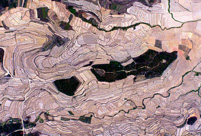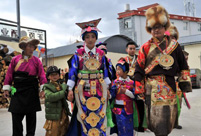

Third, we worked to promote industrial innovation and upgrading to improve economic performance.
To strengthen the new growth engines, an innovation-driven development plan was adopted along with guidelines on its implementation, policies and measures were introduced to encourage public participation in starting businesses and making innovations, and the Internet Plus action plan was implemented.A great number of makers started businesses and made innovations. Improvements were made to policies in support of agriculture to promote transformation of the agricultural growth model. In addressing the decline in industrial growth and the downward slide incorporate performance, we worked to foster new industries and upgrade traditional ones. We launched the Made in China 2025 initiative to upgrade manufacturing, set up government funds to encourage investment in emerging industries and to develop small and medium-sized enterprises, and established more national innovation demonstration zones. We cut overcapacity and encouraged business acquisitions and restructuring. Cuts made in outdated production capacity over the past three years have included over 90 million metric tons of steel and iron, 230 million metric tons of cement, over 76 million weight cases of plate glass, and more than one million metric tons of electrolytic aluminum. The development of production- and consumer-oriented service industries picked up momentum. We took serious measures to conserve energy, reduce emissions, and protect the environment, exceeding obligatory targets. We released self-imposed emissions reduction targets and contributed to the positive outcomes of international negotiations on climate change.
Fourth, we promoted coordinated development between regions and the new type of urbanization to expand development space.
Work continued to promote the coordinated development of the eastern region, the central region, the western region, and the northeast;priority was placed on moving forward with the Three Initiatives—the Belt and Road Initiative, the Beijing-Tianjin-Hebei integration initiative, and the Yangtze Economic Belt initiative. A number of major projects were also launched to develop infrastructure, improve the distribution of industries, and achieve ecological and environmental conservation. Policies and measures were introduced to promote the development of Tibet, Xinjiang, and Tibetan ethnic areas in the provinces of Sichuan, Yunnan, Gansu, and Qinghai. We pressed ahead with the reform of the household registration system, adopted a residence certification system, and stepped up the development of urban infrastructure, making progress in developing new urbanization.
 |  |
 Thai most beautiful transgender Nong Poy release new photos
Thai most beautiful transgender Nong Poy release new photos Now and then photos of Shanghai Jiaotong University
Now and then photos of Shanghai Jiaotong University Is this what air travel will look like in 2050?
Is this what air travel will look like in 2050? Aerial view of watermelon terraces in S China's Baise
Aerial view of watermelon terraces in S China's Baise Traditional wedding of a post-80s Tibetan couple
Traditional wedding of a post-80s Tibetan couple Models in cheongsams present classical oriental beauty
Models in cheongsams present classical oriental beauty Second commissioned C28A corvette made by China enters Algerian Navy
Second commissioned C28A corvette made by China enters Algerian Navy Intoxicating Wuyuan in spring
Intoxicating Wuyuan in spring Gold and silver wares of Qing Dynasty exhibited in Shenyang Imperial Palace
Gold and silver wares of Qing Dynasty exhibited in Shenyang Imperial Palace Top 20 hottest women in the world in 2014
Top 20 hottest women in the world in 2014 Top 10 hardest languages to learn
Top 10 hardest languages to learn 10 Chinese female stars with most beautiful faces
10 Chinese female stars with most beautiful faces China’s Top 10 Unique Bridges, Highways and Roads
China’s Top 10 Unique Bridges, Highways and Roads Meet Beijing’s hottest new trend: vaping
Meet Beijing’s hottest new trend: vaping Govt to increase scrutiny of online retail: report
Govt to increase scrutiny of online retail: report China’s logistic hub in Djibouti to stabilize region, protect interests
China’s logistic hub in Djibouti to stabilize region, protect interests Myanmar won’t distance itself from China
Myanmar won’t distance itself from ChinaDay|Week